An innovative twist on conventional ceilings, 22 Reverse Tray Ceiling Ideas invites you to explore a new dimension in interior design. Reverse tray ceilings invert the classic tray design, creating a dramatic interplay of light, shadow, and architectural depth. These creative solutions marry form with function, offering both aesthetic appeal and versatile lighting options, perfect for accentuating focal points and enhancing room proportions. Whether you seek modern minimalism or bold, artistic statements, each idea is crafted to inspire and transform everyday spaces. Prepare to immerse yourself in 22 Reverse Tray Ceiling Ideas and uncover innovative design secrets.
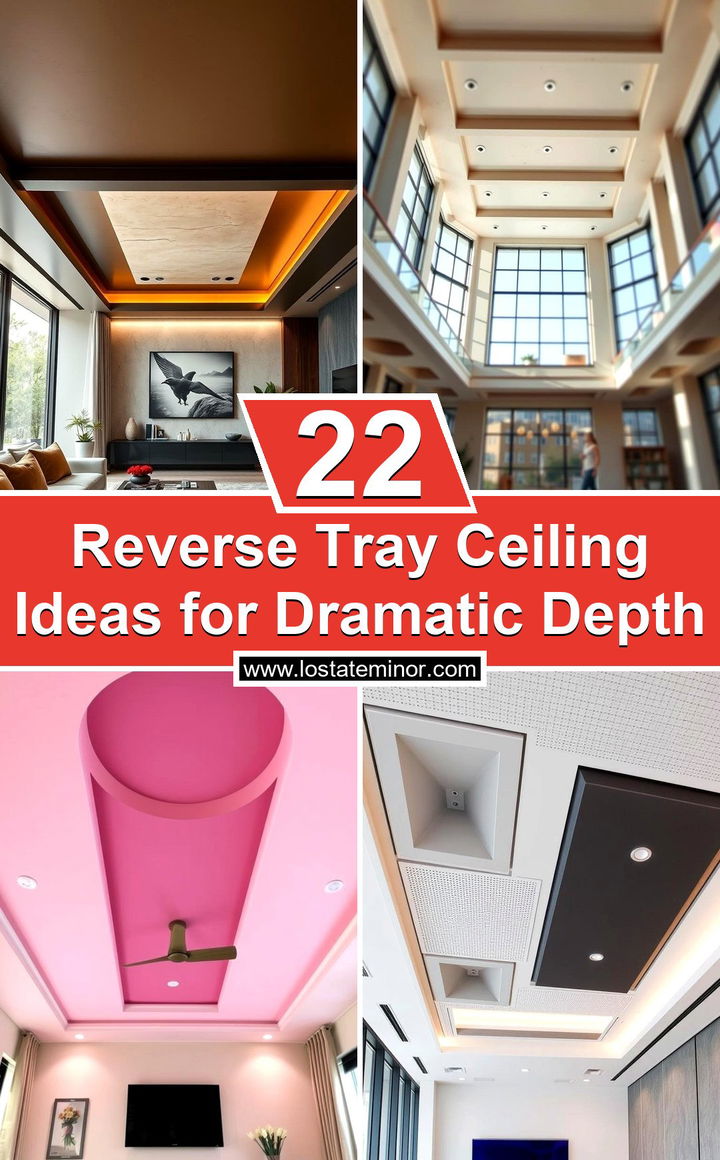
1. Bold Geometric Patterns
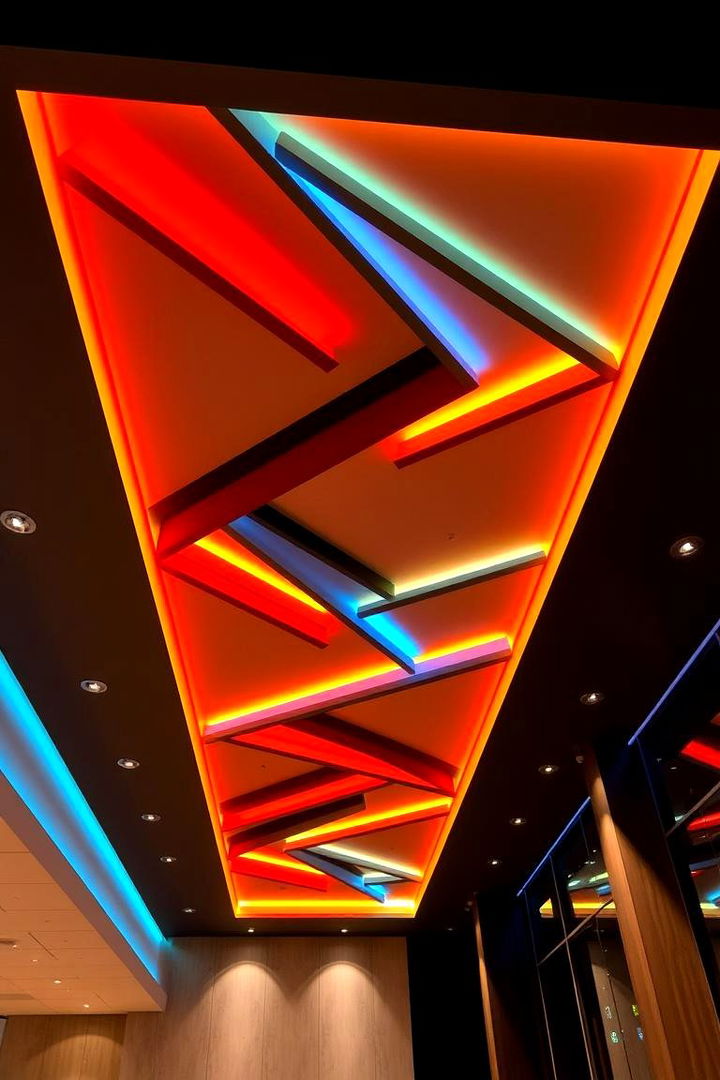
A vibrant display of geometric intricacy marks this reverse tray ceiling concept. Bold lines and angular shapes provide a modern twist to traditional designs, creating an eye-catching focal point in any room. By integrating contrasting patterns and colors, designers can elevate the visual interest while subtly directing attention upwards. Actionable tip: use varied hues to accentuate the depth of the tray, and consider ambient lighting to enhance the geometric structure. This design not only modernizes your ceiling but also brings a dynamic energy to your space, merging art with architecture in everyday environments.
2. Integrated LED Lighting Accents

The transformation begins with integrated LED lighting that casts a refined glow beneath the reverse tray ceiling. A thoughtful fusion of illumination and design, this idea ensures a well-lit ambiance that enhances texture and architectural detail. By embedding LED strips along the tray’s perimeter, you can create a striking visual gradient that accentuates both ceilings and walls. A practical tip is to choose dimmable lights for added versatility. Benefit from energy efficiency and a fresh, modern look that highlights the room’s features while subtly altering the overall mood of your space.
3. Minimalist Reverse Accents
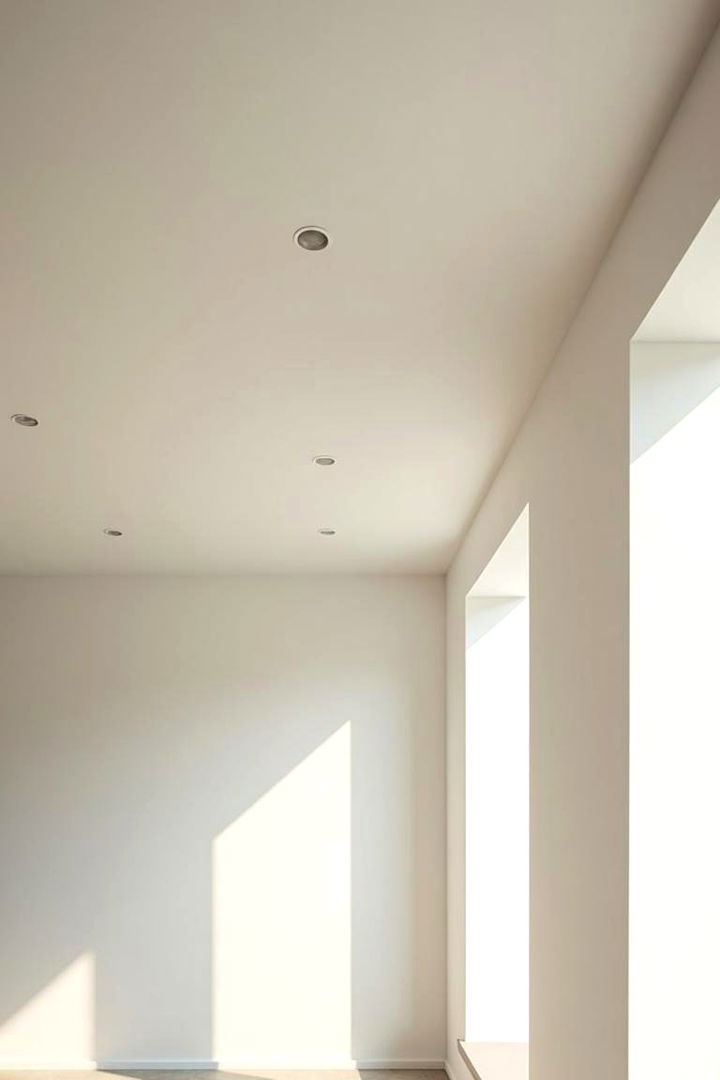
This design embraces simplicity, where less truly becomes more. The minimalist reverse tray ceiling idea strips away unnecessary details to reveal clean lines and understated elegance. A neutral palette paired with gentle shadows accentuates the architectural form, making it ideal for modern, uncluttered spaces. Use high-quality plaster finishes to achieve a smooth, reflective surface that subtly extends the room’s dimensions. The benefit lies in its timeless appeal, offering an effortlessly chic backdrop that harmonizes with various interior styles while infusing the space with modern sophistication and calm.
4. Layered Contrasts for Depth
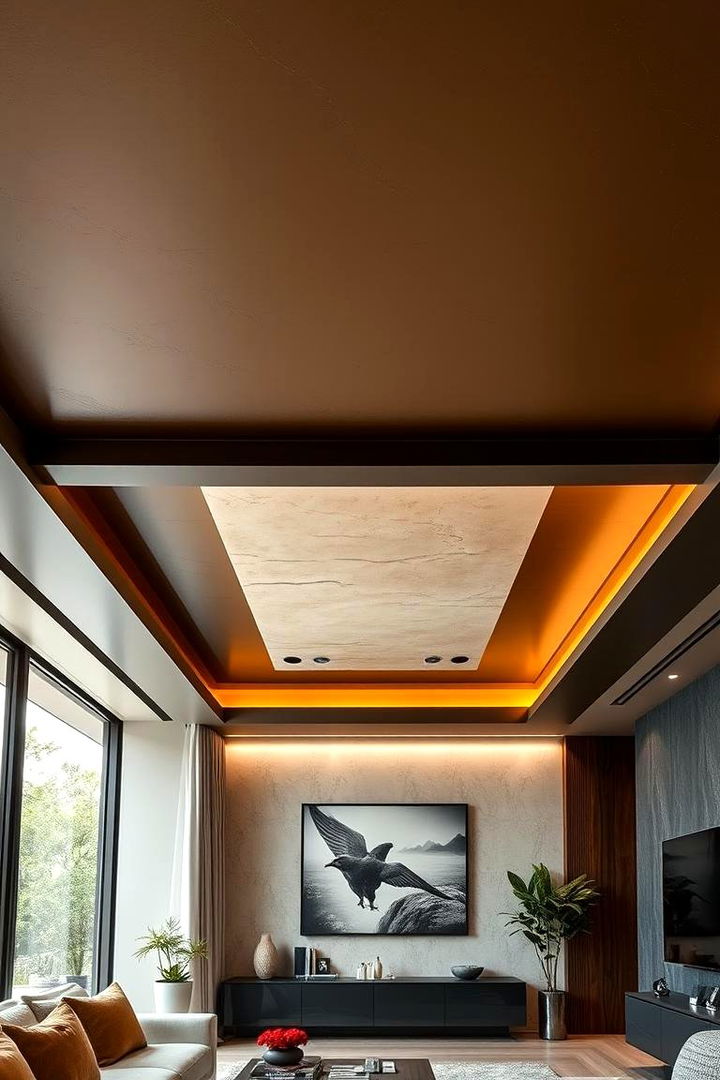
Another innovative approach involves layering contrasting elements to create depth and visual intrigue under a reverse tray ceiling. This technique utilizes different shades or textures to carve out a multi-dimensional space that captivates the eye. Consider using matte and glossy finishes in tandem to accentuate the layered effects—a practical way to manipulate natural and artificial lighting. The contrast imbues your interior with a sense of sophistication and balance, offering a creative solution that merges artistic flair with architectural functionality, while fostering a captivating environment that invites admiration.
5. Exposed Structural Enhancements
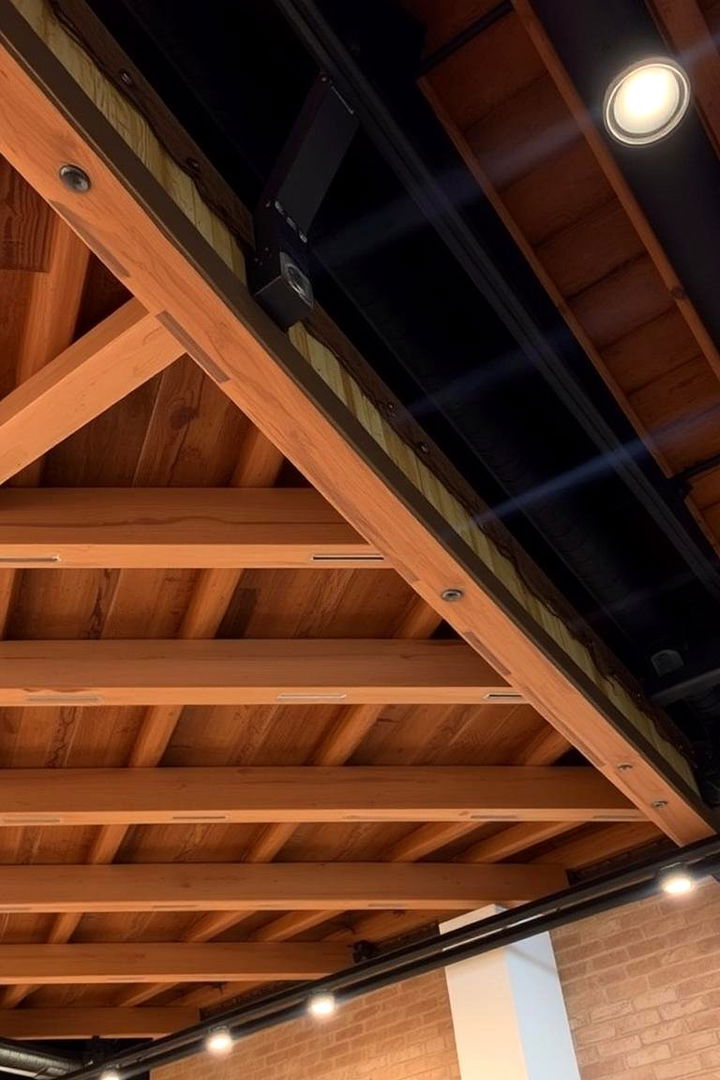
The reverse tray ceiling transforms into a statement piece when the structural elements are celebrated rather than concealed. Under this design, visible beams or support structures contribute to an industrial yet refined aesthetic. By leaving certain elements raw or minimally treated, you gain a balance between modern design and rustic charm. Incorporating natural wood or metal finishes can enhance this effect. Practical benefits include increased spatial perception and a unique visual narrative that highlights the beauty of architectural engineering, making the room a canvas of contrast between the industrial and the elegant.
6. Sculptural Moldings for Drama
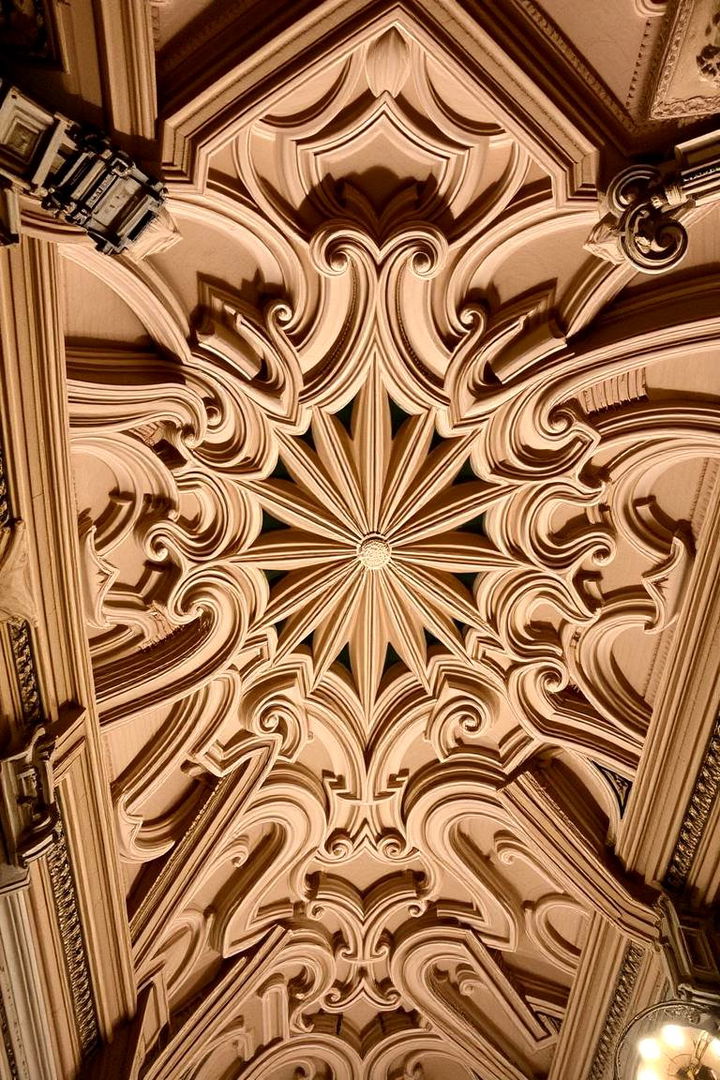
This reverse tray ceiling concept leverages sculptural moldings to create dramatic curves and intricate details that elevate any interior. The design employs detailed crowns and custom moldings that cast captivating shadows, offering a dynamic interplay of light and form. For designers looking to add a touch of artistry, this approach transforms ceilings into art installations. A key tip is to ensure symmetry to maintain visual balance, while textured finishes amplify the sculptural quality. In doing so, your ceiling becomes a bold statement, marrying creative craftsmanship with architectural innovation for a stunning dramatic effect.
7. Modern Industrial Flair
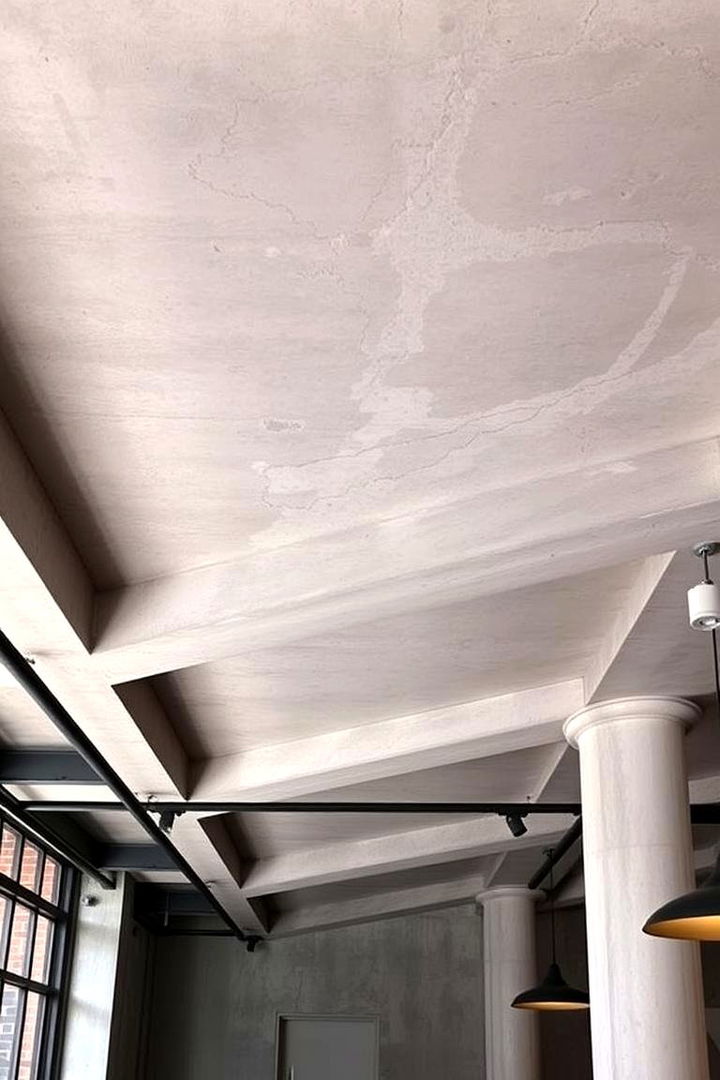
Bringing together sleek design and urban edge, this reverse tray ceiling idea embodies a modern industrial flair. The combination of raw materials like concrete and metal with subtle lighting effects offers a refined, contemporary ambiance. Utilize clean lines and straightforward details to achieve an industrial look that is both functional and stylish. Practical advice involves blending these materials with softer elements to avoid harshness, thus creating a balanced environment. This innovative approach transforms standard ceilings into a stylish canvas, projecting an urban chic vibe that is both inviting and robust.
8. Urban Loft-Inspired Design
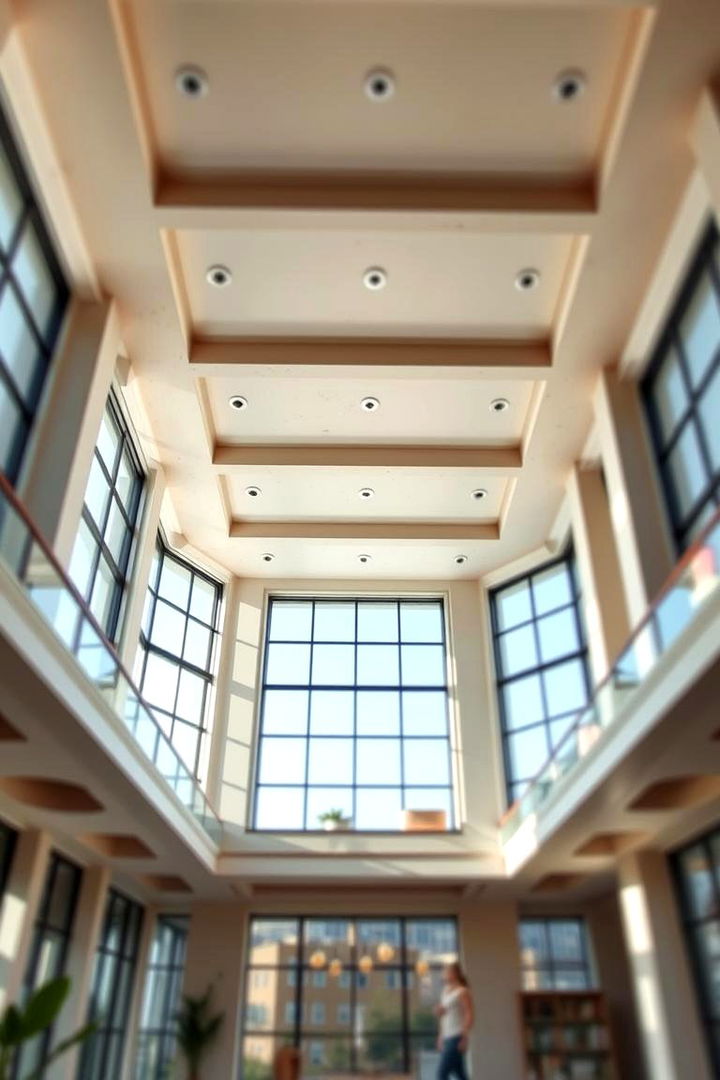
Looking to evoke a loft-like atmosphere? This reverse tray ceiling design draws inspiration from urban lofts, mixing exposed elements with modern touches. Loft-inspired interiors benefit from high ceilings and open spaces, where the reverse tray creates an illusion of increased volume. Practical features include integrating large windows and industrial fixtures that complement the ceiling’s elevated design. The idea is to merge rugged industrial aesthetics with refined architectural details, offering a harmonious blend of functionality and artistic flair. This approach not only magnifies spatial perceptions but also infuses urban sophistication into your living or working area.
9. Fusion of Color and Light
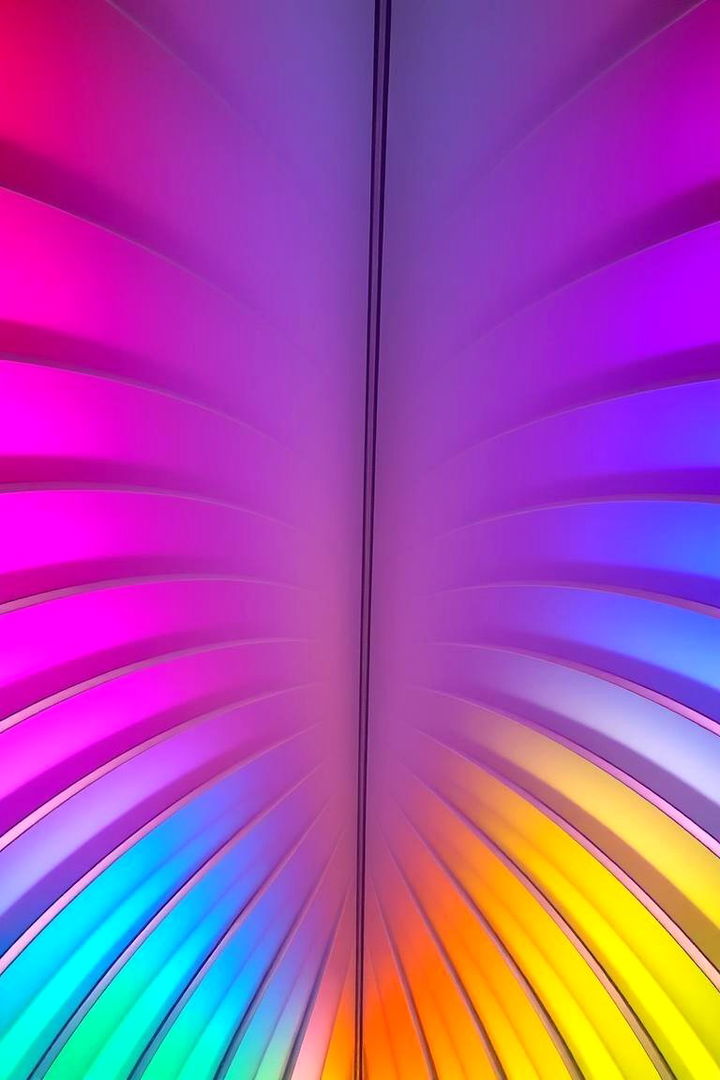
Take a creative leap with a fusion of color and light in your reverse tray ceiling design. Employ a carefully selected color palette to amplify the effects of integrated lighting, creating an inviting and energetic space. The interplay between vivid hues and soft illumination brings warmth and character to any room. Designers should experiment with complementary colors to produce a dynamic environment rich in mood and tone. This combination not only enhances visual appeal but also offers practical benefits such as setting the right ambiance for different activities. Enjoy a versatile design that adapts beautifully to various lifestyles and design schemes.
10. Reflective Finishes for Elegance
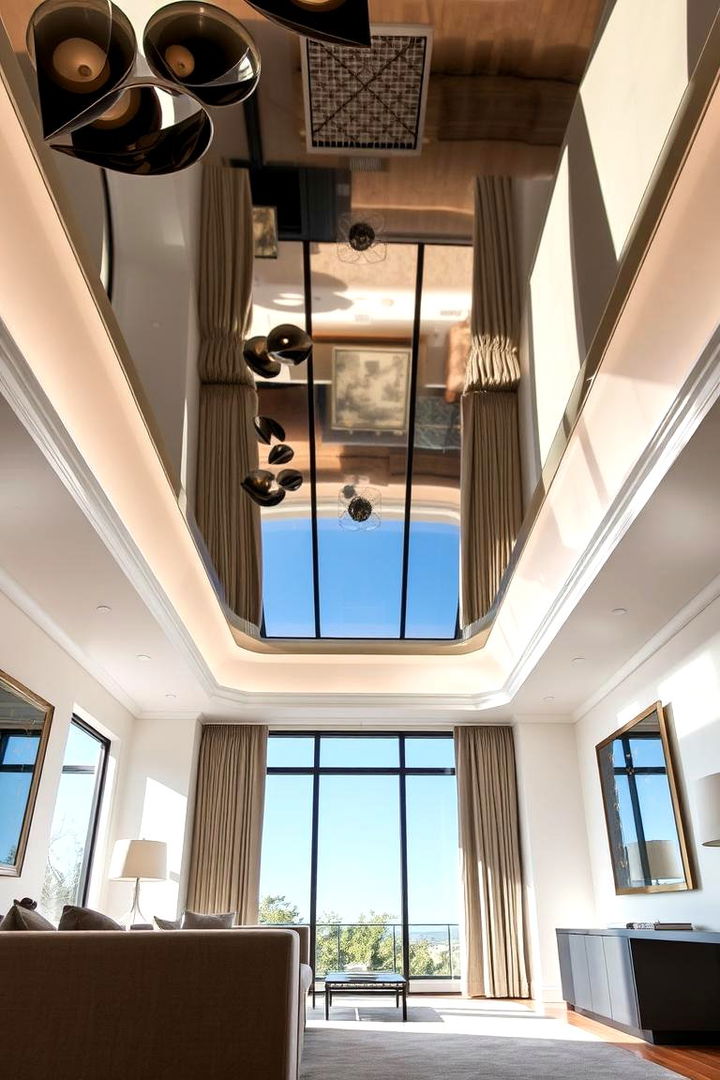
This reverse tray ceiling concept harnesses the power of reflective finishes to dramatically extend and brighten interior spaces. An opulent, polished surface that catches and redistributes light can make a room appear larger and more refined. Consider using materials like high-gloss paint or reflective tiles to achieve this effect. A practical tip is to pair these finishes with warm lighting to create a welcoming atmosphere. The benefit is twofold: enhanced illumination and an amplified sense of space, resulting in a dramatic yet elegant atmosphere that exudes modern luxury and timeless appeal.
11. Multifunctional Design Elements
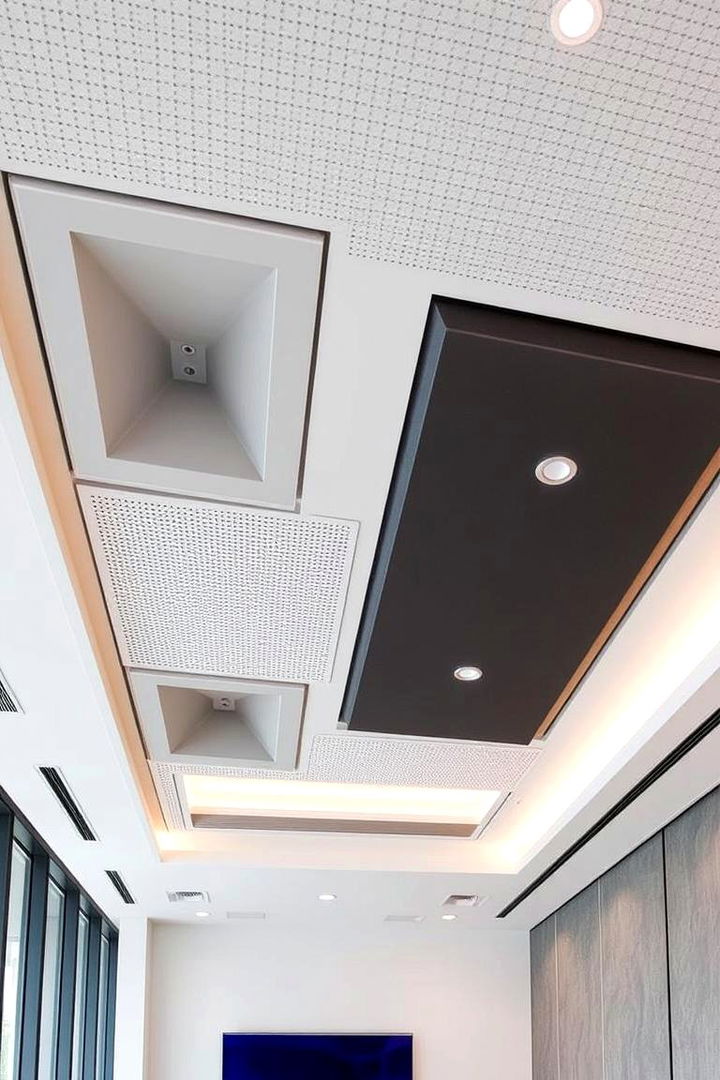
With multifunctional design elements, the reverse tray ceiling transforms into a feature that can serve both aesthetic and practical purposes. Imagine integrating hidden storage niches or acoustic features into the ceiling design, adding functionality without sacrificing style. This design concept encourages thoughtful planning, allowing you to maximize space utility while enhancing visual impact. Actionable suggestions include consulting with design professionals to integrate custom solutions that cater to your specific needs. The benefit is a cleverly designed room where form meets function, resulting in an innovative space that is as practical as it is visually appealing.
12. Artistic Ceiling Statements
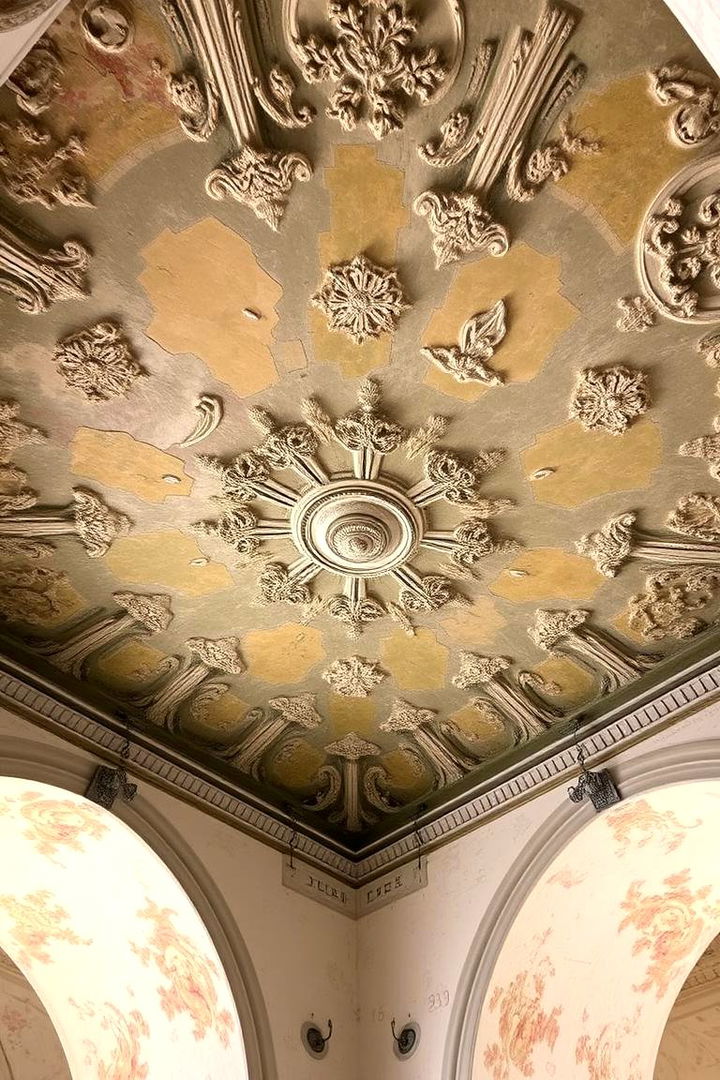
Surprisingly, the reverse tray ceiling can act as a canvas for personal artistic expression. This idea merges architectural structure with creative murals or textured finishes that transform a ceiling into a captivating artwork. Experiment with hand-painted details, custom stencils, or even digitally printed patterns to capture unique visual narratives. The application of artistic elements adds personality and charm, transforming ordinary spaces into gallery-like displays. Designers are encouraged to explore innovative techniques and materials that reflect personal style while respecting the room’s architectural integrity. Revel in a design that celebrates art and craftsmanship through every nuanced detail.
13. Organic Texture Incorporation
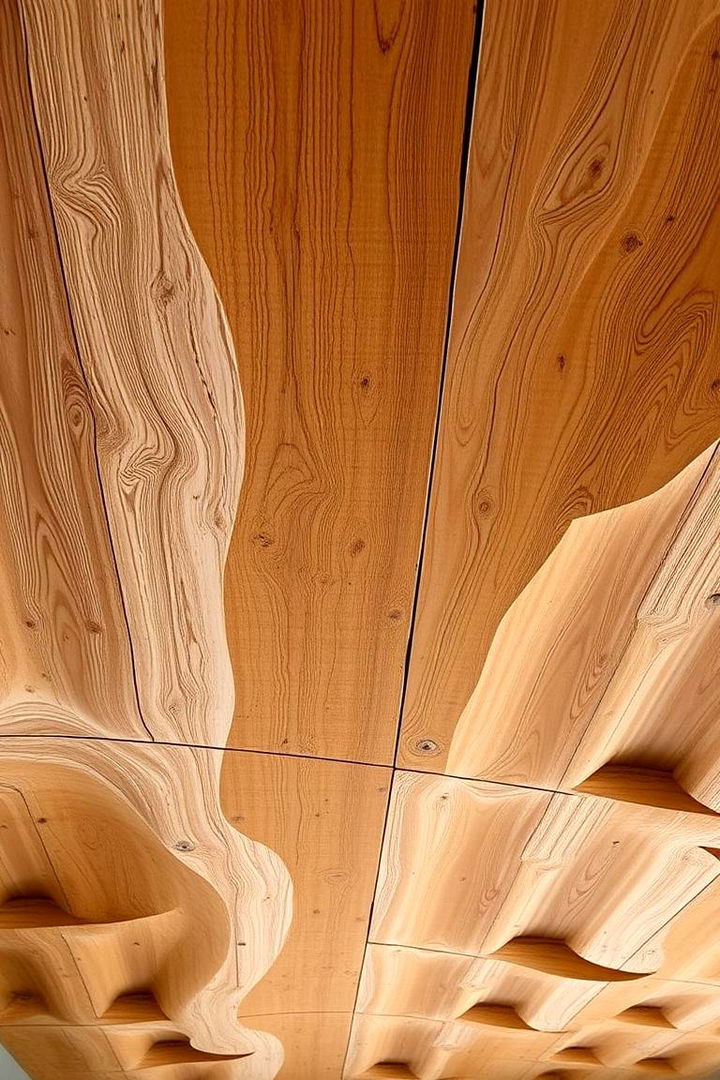
Unlike conventional flat ceilings, integrating organic textures into a reverse tray design adds a natural warmth and tactile interest. This idea involves mixing elements such as reclaimed wood, stone, or plaster with fluid curves and gentle recesses, creating a sense of natural harmony. A practical tip is to use textures that complement your interior’s color palette and style. The design benefits include a cozy, inviting atmosphere that blends modern aesthetics with natural charm. Embracing these elements allows you to craft a uniquely earthy ambiance, fostering a space that feels both timeless and rejuvenating, bridging indoor comfort with natural elegance.
14. Customizable Mood Lighting
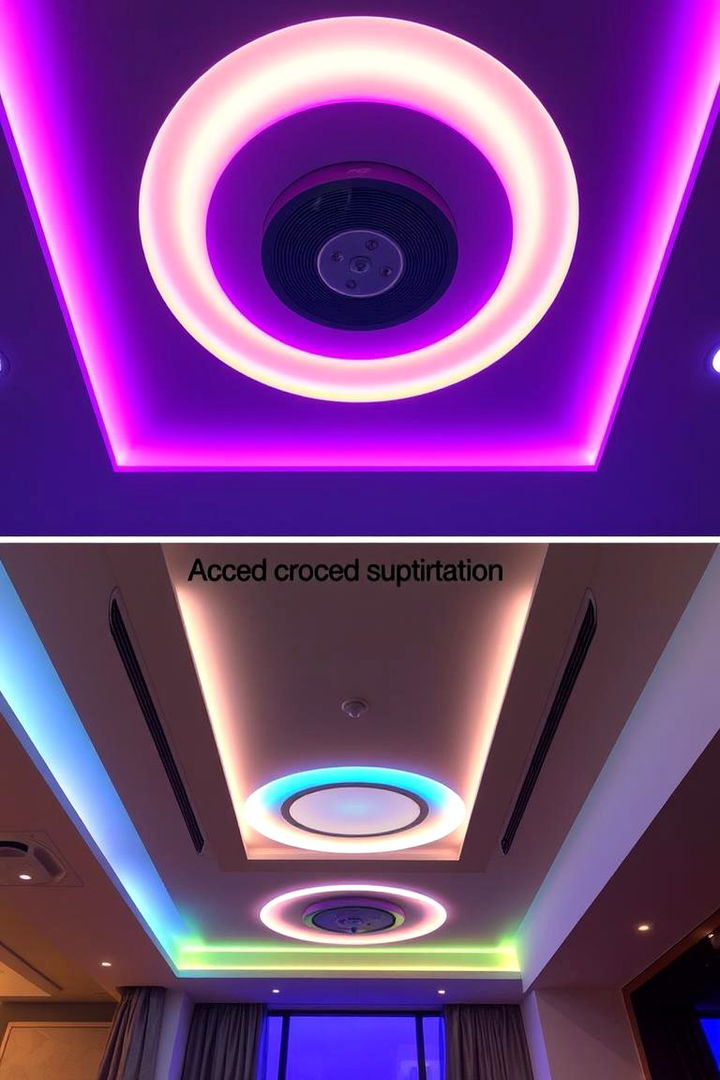
With customizable mood lighting, the reverse tray ceiling becomes a tool for creating dynamic atmospheres that adapt to every moment. Integrated lighting options enable you to adjust the brightness, color temperature, and intensity, giving you control over the room’s mood. Designers can experiment with various lighting layers embedded within the tray to highlight different architectural features. A practical tip is to pair this system with smart home technology for seamless control. The value lies in the ability to set the perfect tone for any occasion, ensuring that your space is both visually engaging and adaptable to your lifestyle needs.
15. Sustainable Material Innovations
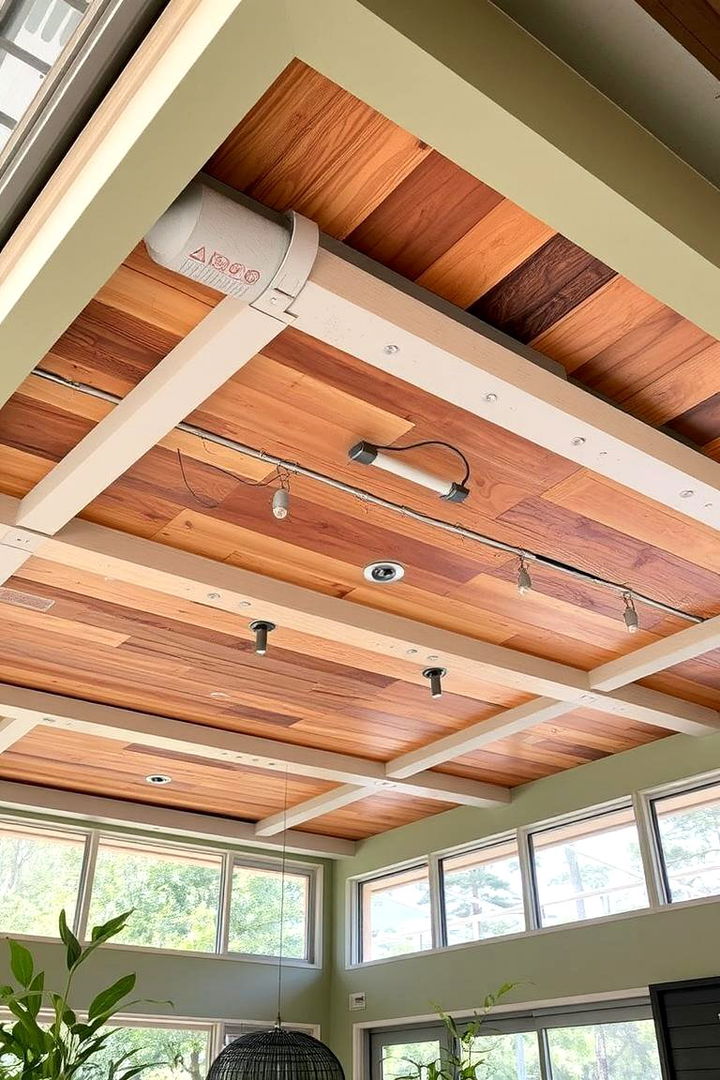
In line with modern eco-friendly trends, sustainable material innovations offer an intelligent twist on reverse tray ceiling designs. Utilizing reclaimed woods, recycled metals, or eco-friendly composites integrates environmental stewardship with cutting-edge design. This approach not only minimizes ecological impact but also introduces distinctive textures and natural color variations that enhance the room’s character. A key practical tip is to source materials from certified sustainable suppliers. The benefits extend beyond aesthetics: improved energy efficiency and a healthier indoor environment can be achieved, making your design both responsible and remarkably stylish in a world increasingly focused on sustainability.
16. Creative Shadow Play
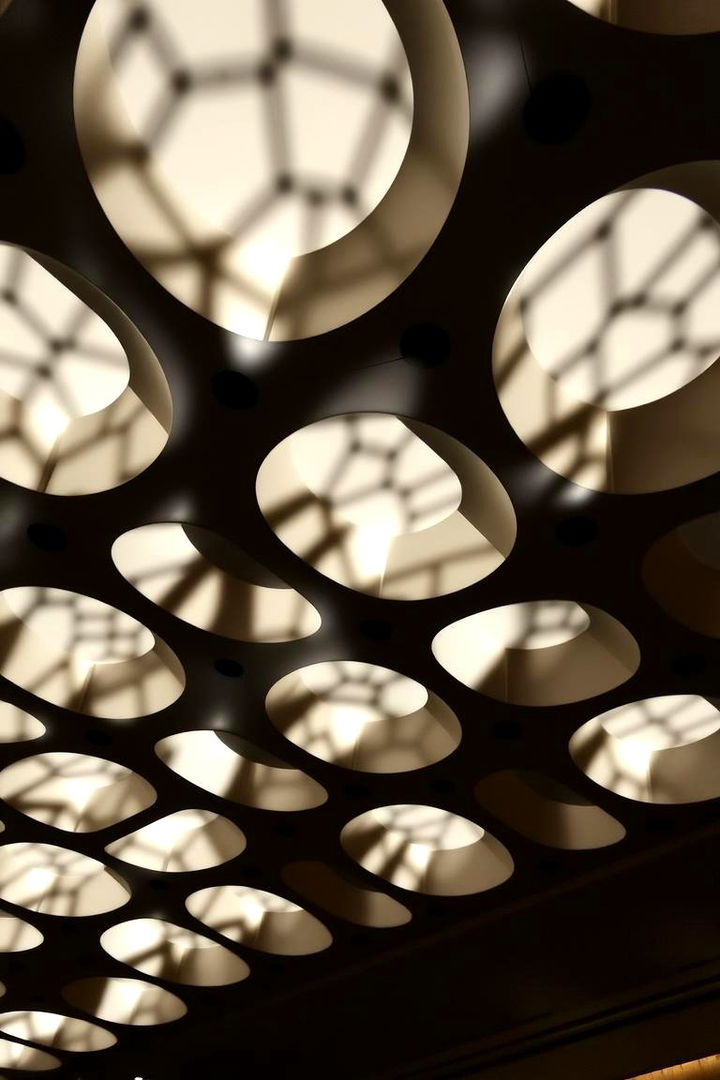
Creative shadow play transforms the reverse tray ceiling into a luminous spectacle where light and dark coalesce into art. By manipulating strategically placed lights and seeking interplay between the ceiling’s recesses and raised areas, intricate patterns and mesmerizing shadows emerge. This design technique encourages a delicate balance in lighting, ensuring that shadows create depth without overpowering the space. A practical suggestion is to experiment with different light angles to achieve the desired effect. The result is a dynamic and visually stimulating atmosphere, turning your ceiling into an ever-changing work of art that captivates and inspires every time you look up.
17. Depth with Floating Elements
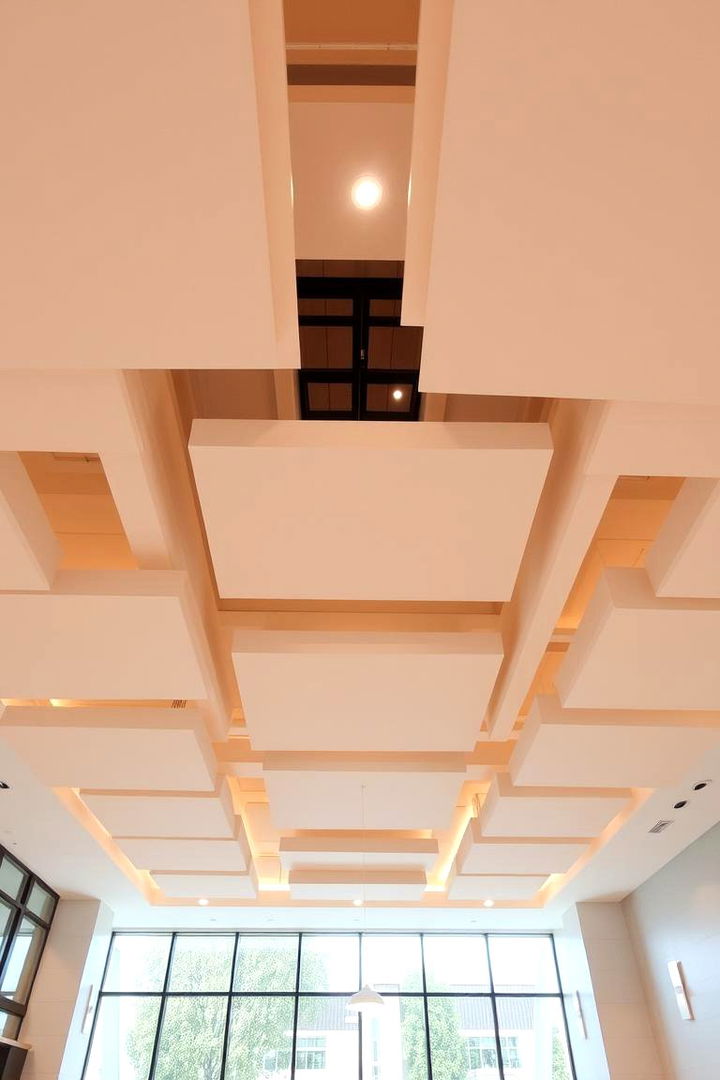
By introducing floating elements, this reverse tray ceiling design adds an unexpected sense of depth and layered sophistication. Suspended panels or integrated fixtures create the illusion of movement and space within the ceiling structure. Designers may use this tactic to subtly emphasize the room’s verticality or incorporate hidden lighting behind these floating details. A useful tip is to ensure these elements maintain proportional harmony with the overall room design. The benefit is an airy, modern ambiance that enhances spatial perception and invites creative architectural exploration, making the room feel both expansive and uniquely refined.
18. Harmonious Color Palettes
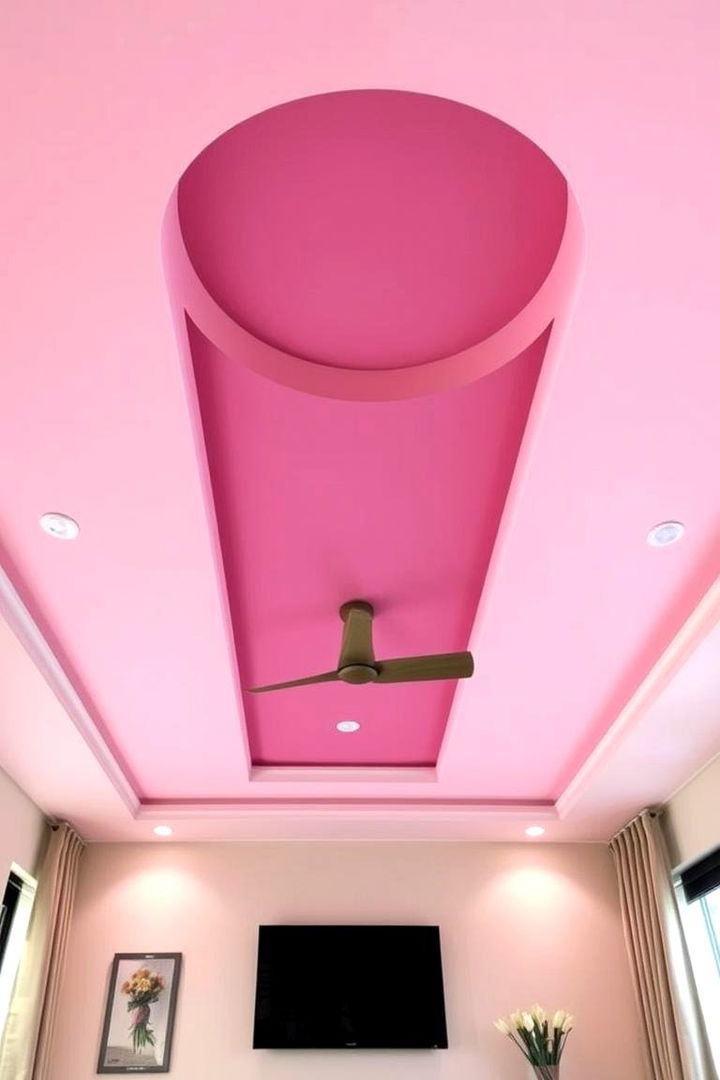
Taking a fresh approach with harmonious color palettes, this reverse tray ceiling design focuses on creating balance through carefully selected hues. A well-matched color scheme can seamlessly integrate the ceiling with surrounding décor, emphasizing unity and elegance. Practical recommendations include combining soft neutrals with occasional bold accents to lend a sophisticated yet welcoming ambiance. The benefits extend to improved mood, as the right colors can evoke feelings of comfort and tranquility. This technique is ideal for spaces seeking a cohesive, stylish look that merges innovative design with a familiar, homely atmosphere, transforming the ceiling into a subtle work of art.
19. Vintage Revival Techniques
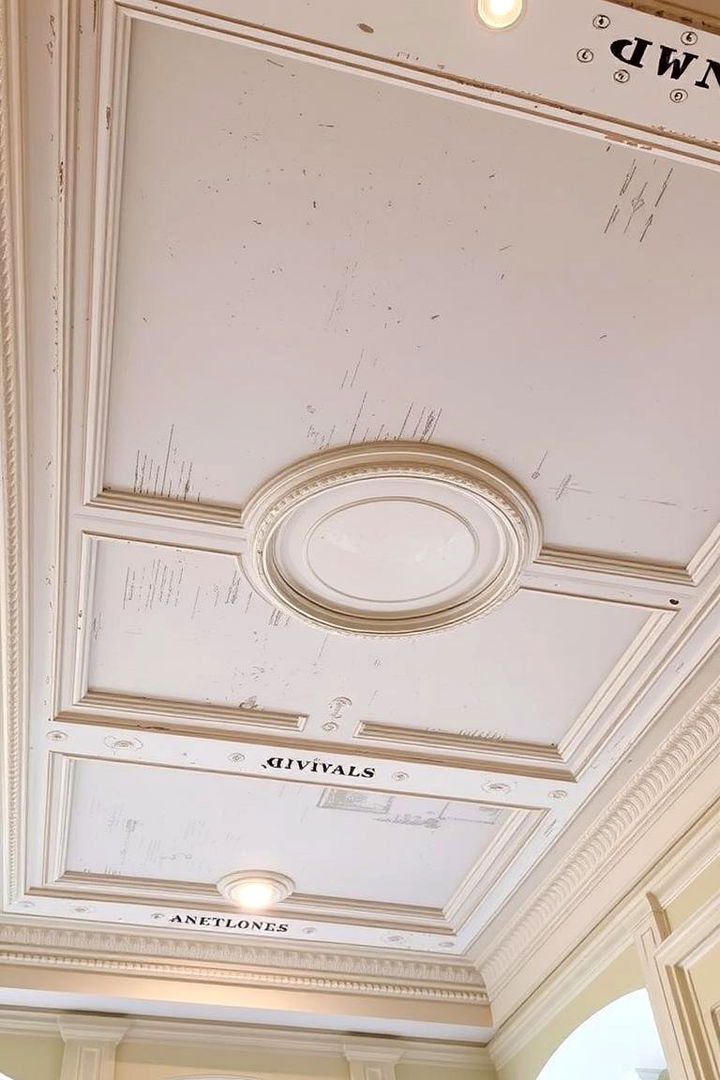
The vintage revival reverse tray ceiling design brings nostalgic charm melded with contemporary twists. Antique-inspired moldings and distressed finishes capture the essence of bygone eras while embracing modern functionality. Designers can incorporate period-specific decorative elements, subtly offset with modern lighting to highlight intricate details. A practical piece of advice is to blend vintage textures with current materials for a balanced look that pays homage to the past while ensuring lasting durability. The result is a timeless aesthetic, merging historical elegance with today’s design sensibilities, creating a rich narrative that resonates with both heritage and modern innovation in a single sweeping gesture.
20. Dynamic Panel Arrangements
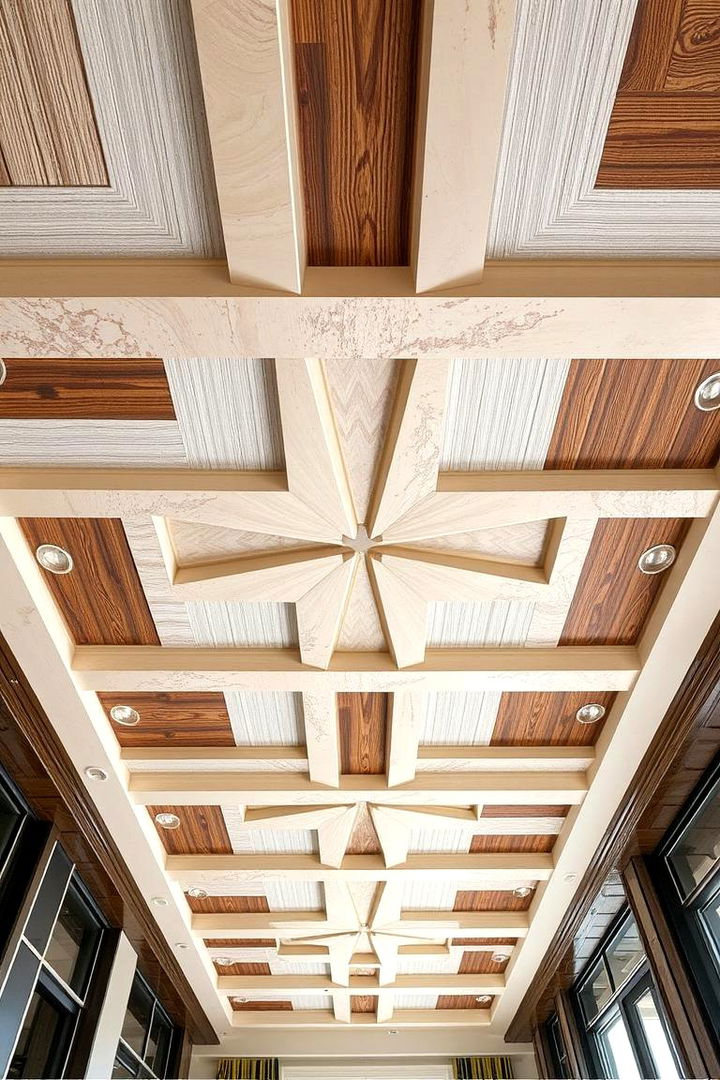
Unlike traditional ceiling designs, this dynamic panel arrangement redefines spatial aesthetics through innovative composition of varying panels. By integrating contrasting sizes, depths, and finishes, you can craft a reverse tray ceiling that serves as a statement centerpiece. A useful tip is to experiment with symmetrical and asymmetrical panel layouts to maintain visual balance while delivering a bold, artistic impact. The benefits include heightened visual interest and enhanced light reflection, giving your space a lively yet refined atmosphere. Such a design not only elevates the ceiling’s aesthetic appeal but also invites endless customization opportunities tailored to your unique taste.
21. Architectural Experimentation
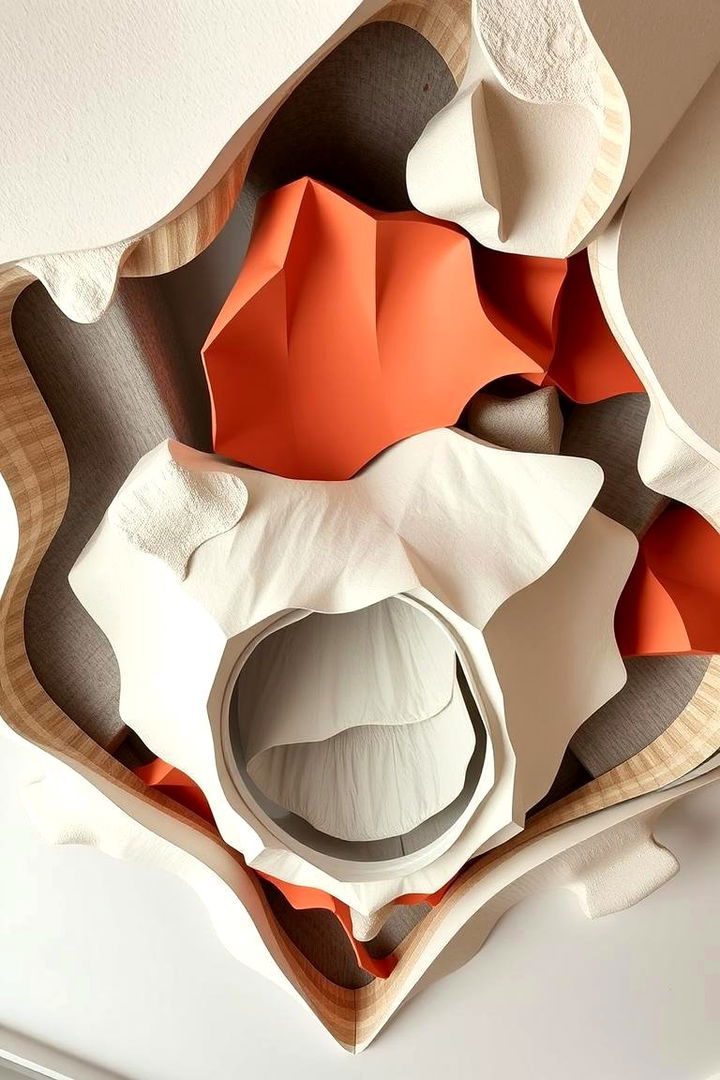
Expert designers often turn to architectural experimentation to push creative boundaries with reverse tray ceilings. This concept invites you to explore unconventional shapes, angles, and layering techniques that defy traditional norms. Incorporate experimental materials and textures while ensuring functionality remains intact. A practical tip is to create small prototypes or sketches before full-scale implementation, ensuring the experiment harmonizes with the overall design. The innovation here lies in its ability to surprise and delight, making your ceiling a reflection of bold creativity and forward-thinking design that inspires conversation and admiration throughout your living space.
22. Bespoke Finishing Touches
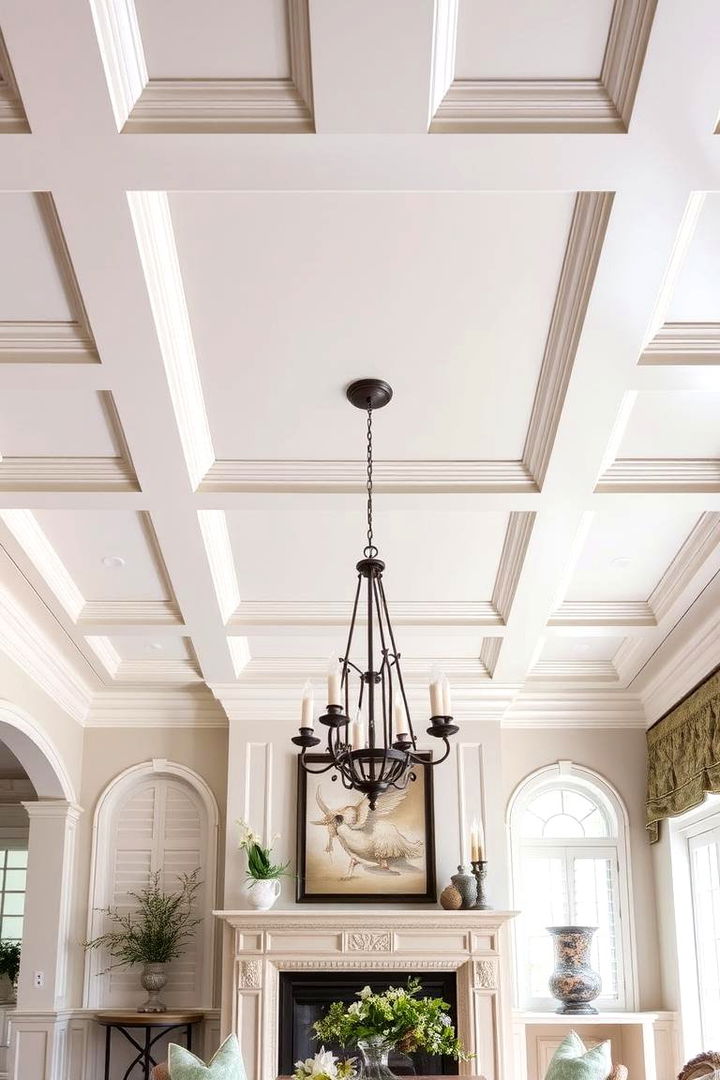
Finally, bespoke finishing touches elevate the reverse tray ceiling into a personalized masterpiece, tailored to the specific tastes of the space’s owner. Custom detailing, from hand-painted accents to unique material choices, adds a signature charm that sets your ceilings apart. Consider consulting with artisans or design professionals who specialize in bespoke solutions to capture the desired flair. The practical benefit is a space that not only stands out visually but also resonates with your individual style. This final concept brings an element of sophistication and exclusivity, ensuring every detail is crafted to reflect your personal vision and elevate the overall room aesthetic.
Conclusion
Taking everything into account, the creative journey through 22 Reverse Tray Ceiling Ideas offers a wealth of inspiration to transform ordinary interiors into extraordinary visual experiences. Each idea unfolds a unique narrative that blends sophisticated design with practical innovations, ensuring your spaces are both functional and artistically engaging. Embrace these fresh concepts to redefine your ceiling, and let the transformative power of architectural creativity uplift your home or workspace.
